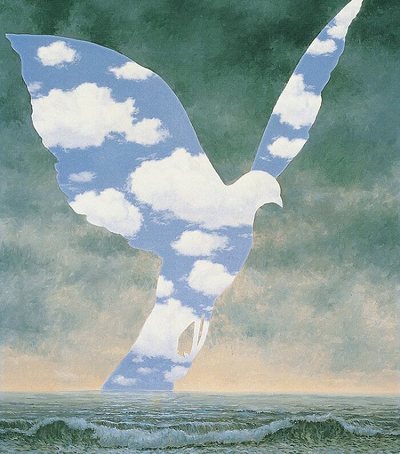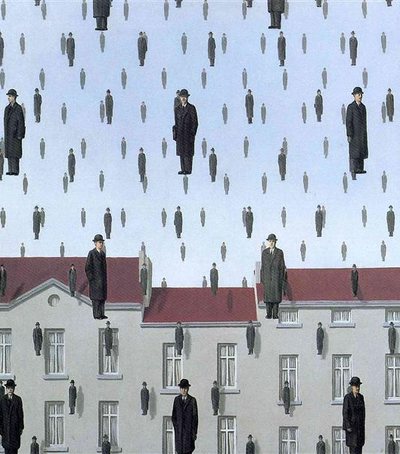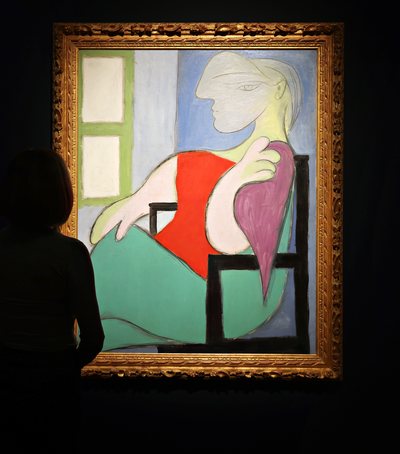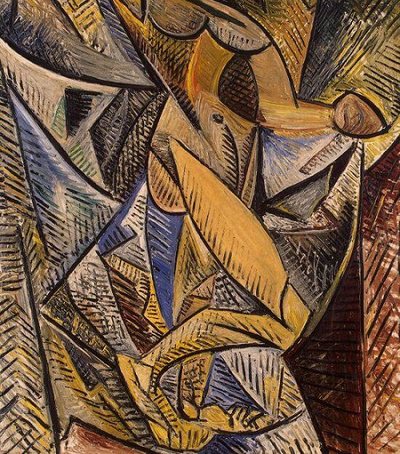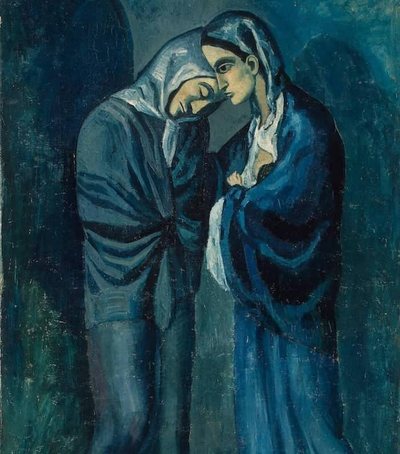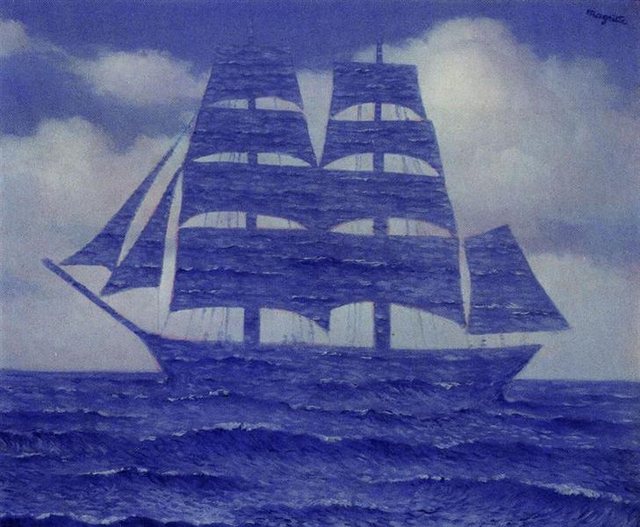
The seducer, seduced by his own seduction!
Surely no one would mistake “The Temptress,” painted in 1953, for an ordinary landscape. A ship sails alone on an ideal sea, surrounded by one of Magritte’s favorite motifs, clouds. Think of the idiom “on the ninth heaven.” We have no indication of time, place, or weather—no indication of sunlight or rain beyond the blue sky and stereotypical piled clouds. The sailing ship, of its kind once built for ocean voyages, belongs to an unspecified past, as distant and idealized as a manipulated dream world.
However, Magritte probably had very little personal experience with the sea. He grew up in a nearly dead center of Belgium, in a small town southwest of Brussels, where the plains of Waterloo give way to the hilly terrain of Mons. He returned from Paris to Brussels in 1930, more or less for the better. One might call him the perfect bourgeois, a role he liked to play in his art, although indications of a real city rarely appear in art – as rarely as anything else concrete.
Even in the earliest days of sailing ships, Belgium had never been a rival to its neighbors as a naval power. The Dutch, after their liberation from the Spanish, raised their harbors to the sky in Baroque art, but not in Flemish. If Magritte ever felt the call of the sea, it must have been an inner call.
Clearly different from a seascape, Magritte has done something truly strange with the ship: he has replaced its shape with an extension of water. Surrealism valued such illogical and mysterious juxtapositions. Breton liked to quote a writer who called himself Comte de Lautréamont, who in 1868 sought an image “as beautiful as the chance encounter of a cutting table with a sewing machine and an umbrella.” We can think of the ship’s transformation as a hand-made work, rooted in Surrealism, much like all modern art, in Cubist collages.
If it remains only a dream, the painting’s title, “The Temptress,” also suggests uncensored fantasy, and Magritte himself spoke of the painting not simply as a real object—as in the case of a painting of “still nature”—but as “true desires.” Whoever may be committing a seduction, no one is restraining his sin. In French, seduction has connotations of pleasure and magic, and some critics have labeled his art “magic realism” and a precursor to the movement in America that gave rise to Philip Evergood and George Tooker. The Temptress, however, is not a random appearance. The pleasure-seeker may be steering the ship, painting it, or viewing it now in a museum. Thus, the seducer—perhaps Magritte himself—is seduced by his own art.
Article source:
https://www.renemagritte.org/seducer.jsp
Photo Credits:
https://www.wikiart.org/en/rene-magritte/the-seducer-1953

